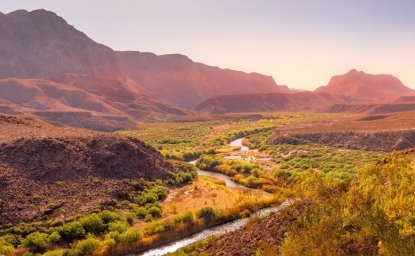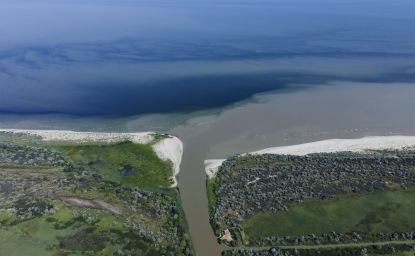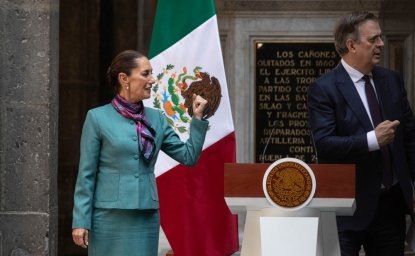The Mosul Dam: Turning a Potential Disaster into a Win-Win Solution


Iraq has seen its share of calamities in recent years, but none is as dangerous as the impending failure of the Mosul Dam. The dam, if it were to be breached, will result in a tsunami-like wave that would sweep through cities and hamlets along the Tigris River from Mosul to as far south as Amarah and even Basra. Baghdad would be submerged under five meters of water within four days of the breach of the dam. Not only do experts estimate the possible fatalities to range from 500,000 to over one million, but consider the logistics of trying to provide electricity, drinking water, food, hospitals, transportation, and diesel for millions of people.
The reaction to this potential calamity ranges from the U.S. government’s caution, which has issued warnings to its expats to stay at least six kilometers away from the Tigris (noting that the U.S. Embassy in Baghdad is situated on the shores of the Tigris in the Green Zone), to the Iraqi government’s nonchalance, which has only calm pronouncements to offer that there is nothing wrong with the dam and that grouting operations designed to strengthen it are proceeding on schedule.
The Iraqi government’s lackadaisical attitude notwithstanding, internal reports generated by the U.S. Army Corps of Engineers—which has recently installed very sensitive monitoring instruments—indicate that the dam is in real danger: The sensing equipment has detected a movement of five millimeters of settlement and lateral movement. This may not seem to be very large, but for a dam of such significant size—and the largest in Iraq—such a move over a short period of time may be a tell-tale sign of an upcoming disaster. Baghdad has given a $300 million contract to an Italian firm to introduce new grouting technology. This is akin to putting a Band-Aid on a gunshot wound and pretending that everything is going to be all right. Further, the next two months are the most critical as snow starts to melt and reservoirs start to get full. The contract given out will not be implemented in time to avert a disaster this flood season. The Iraqi government is trying to make space in the reservoir by letting one of the floodgates open (the other one has been out of commission since 2014) and directing the water toward Lake Tharthar (an artificial lake between the Tigris and Euphrates) to store the water for the summer when the south needs more water. However, Lake Tharthar is in the middle of ISIS-controlled territory.
For a more permanent solution, two construction companies have suggested supporting the foundation of the dam on the lower bedrock formations. This means an unprecedented 200-meter (600 feet) cutoff slurry wall under the dam. This solution, estimated to cost approximately $3 billion, may not even solve the problem as such a deep cutoff wall has never been attempted before and special equipment would need to be designed and built to accomplish such an engineering feat. Another solution that has been suggested is to build another smaller dam downstream of the Mosul Dam in the Daboush area to arrest the peak wave and reduce the impact. However, such a dam would need years to be constructed and meanwhile, we have to live with the fear of continued seepage breaching the Mosul Dam.
There is, however, a solution that is not only cheaper but one that can become the basis of international cooperation where everyone can emerge a winner. It is possible to construct a deal in which the Iraqi government, the Kurds, and Turkey can all emerge better off while the historic city of Hasankeyf is saved and more water is delivered to the struggling marshes of Iraq farther south. There are a number of steps to this alternative proposition.
First, instead of investing the estimated $3 billion to repair the Mosul Dam—money that Iraq can hardly afford today given the budget deficit—resources could be directed toward storing water in the mountainous regions of Turkey. This would entail the decommissioning of the Mosul Dam. The reservoir of the Ilisu Dam, once filled, will inundate the city of Hasankeyf, a World Heritage Site. Currently the Turkish government is in the last stages of completing the Ilisu Dam, but the growing Kurdish rebellion and the worsening security situation in the area is impeding construction.
Iraq, under this proposal, would pay Turkey to store water for its use. Storage in Turkey’s higher elevation with narrow and deep valleys would significantly reduce the surface area available for evaporation compared to the dam, which will in turn make more water available downstream.
Iraq would pay the leasing fee with oil and gas exports, thus securing a market for its increasing hydrocarbon production. Further, to subsidize the deal, UNESCO could pay part of the leasing fees to save Hasankeyf by ensuring that the Ilisu Dam waters do not reach a level that would threaten the historical site. The United States could also consider subsidizing the deal to reduce potential tensions in the area and help Iraq avert a possible humanitarian disaster if an epic flood results from the breaching of the Mosul Dam.
Beyond these immediate concrete benefits, such an arrangement would also create a mechanism for the multi-lateral cooperative management of the river basins. This could act as a foundation for cooperation on a wide range of other issues, including saving the marshes of southern Iraq by coordinating releases from the dams in the spring to replicate the historic cycle of flood waters renewing the vitality of the biodiversity for the marshes.
What is more, coordinated management of the water in the basin can lead to better-integrated management of other resources. For example, Iraq could schedule annual maintenance of the fossil fuel plants in the spring, increasing the demand for electricity. Turkey could then schedule releases from the reservoirs as they prepare to take on water from the spring-time snow melts. This would not only generate extra hydroelectricity that could be sold, but it would also recreate the flooding action that was typical before the construction of the dams.
The opinions expressed herein are those of the author and do not reflect those of the Wilson Center.
Author

Middle East Program
The Wilson Center’s Middle East Program serves as a crucial resource for the policymaking community and beyond, providing analyses and research that helps inform US foreign policymaking, stimulates public debate, and expands knowledge about issues in the wider Middle East and North Africa (MENA) region. Read more

Explore More
Browse Insights & Analysis
Water Security at the US-Mexico Border | Part 1: Background

Harnessing the Benefits of Water Cooperation in an Increasingly Complex World

